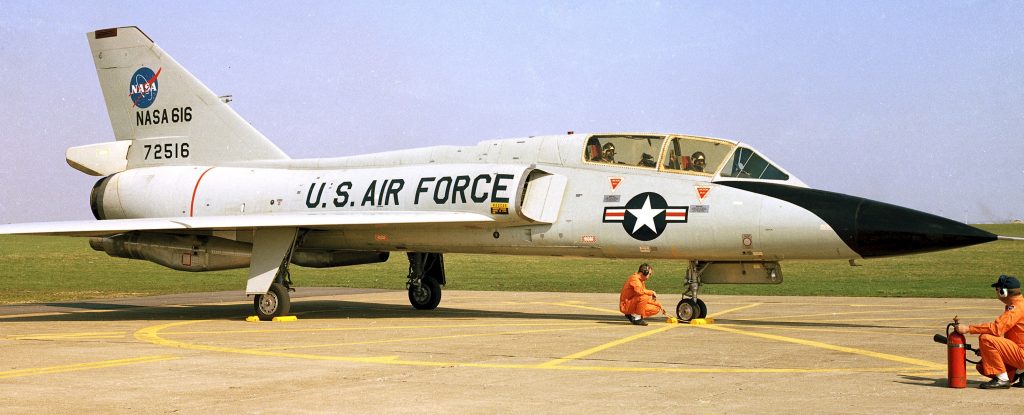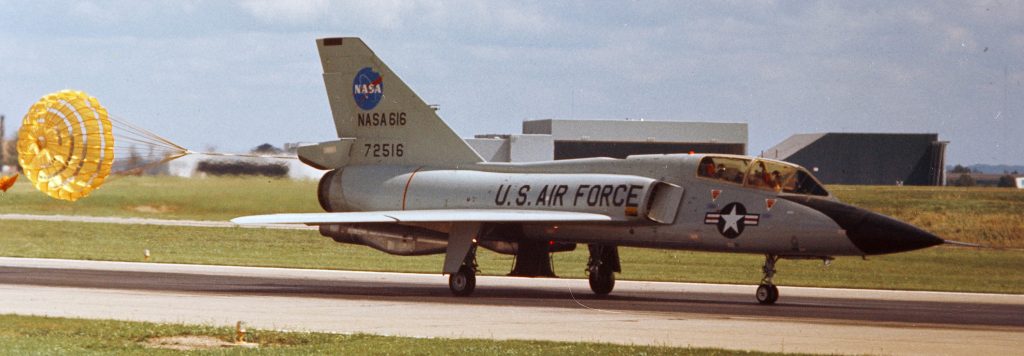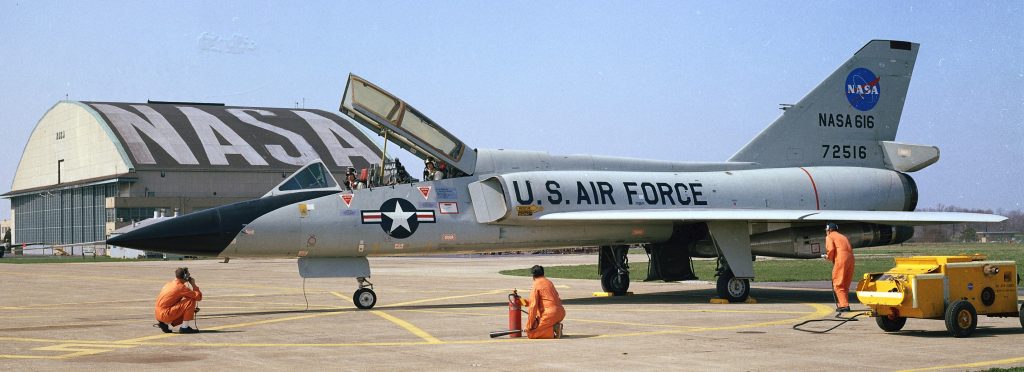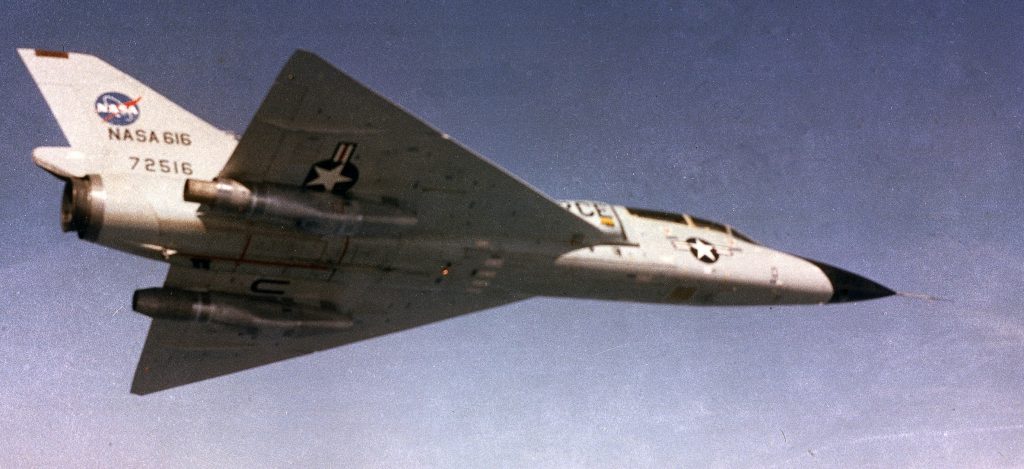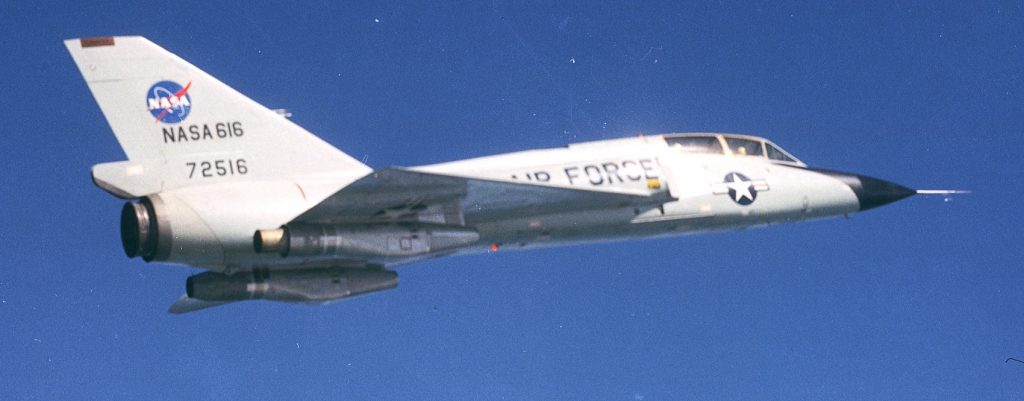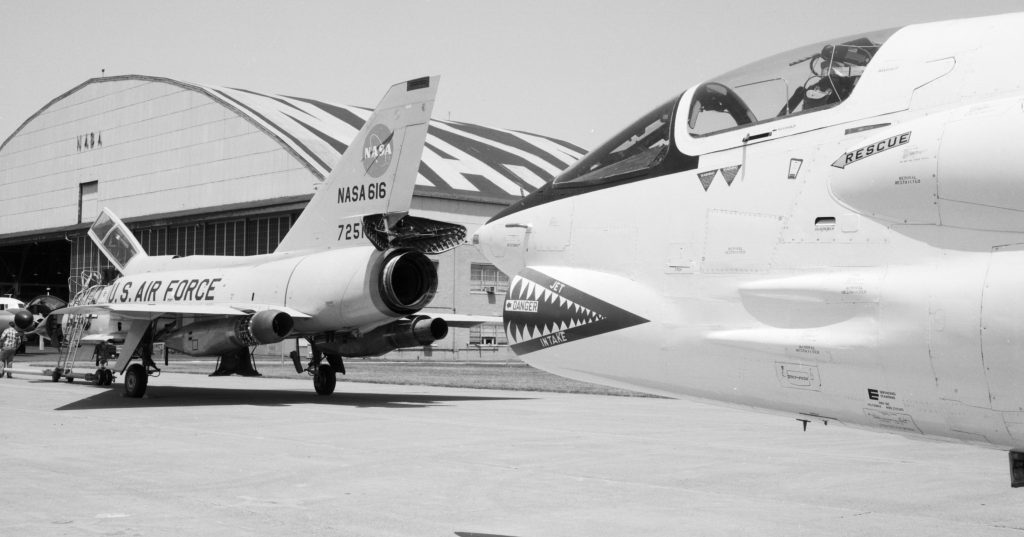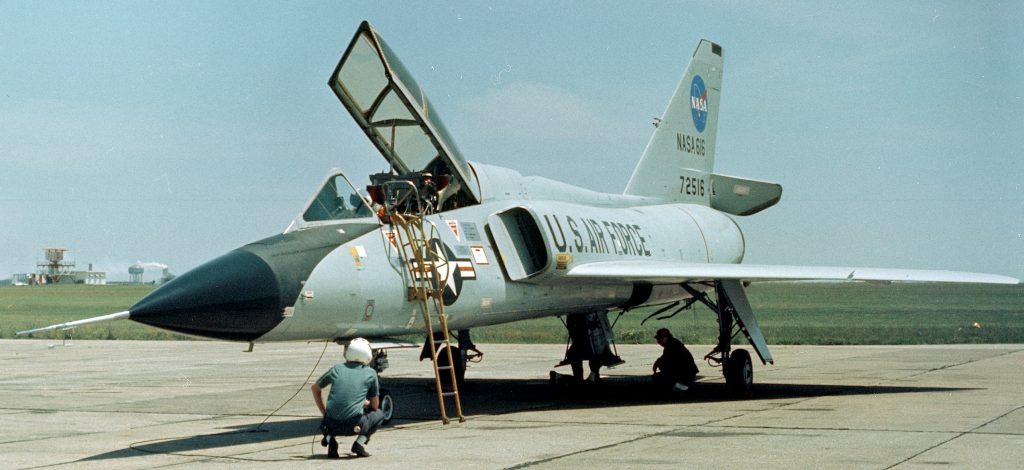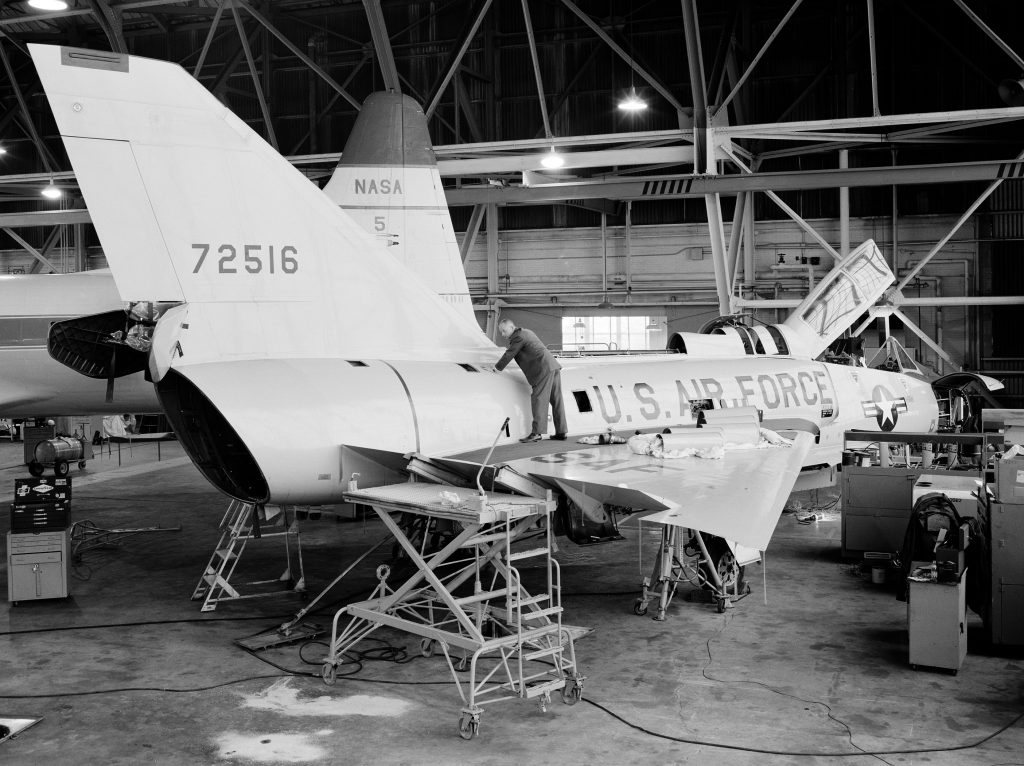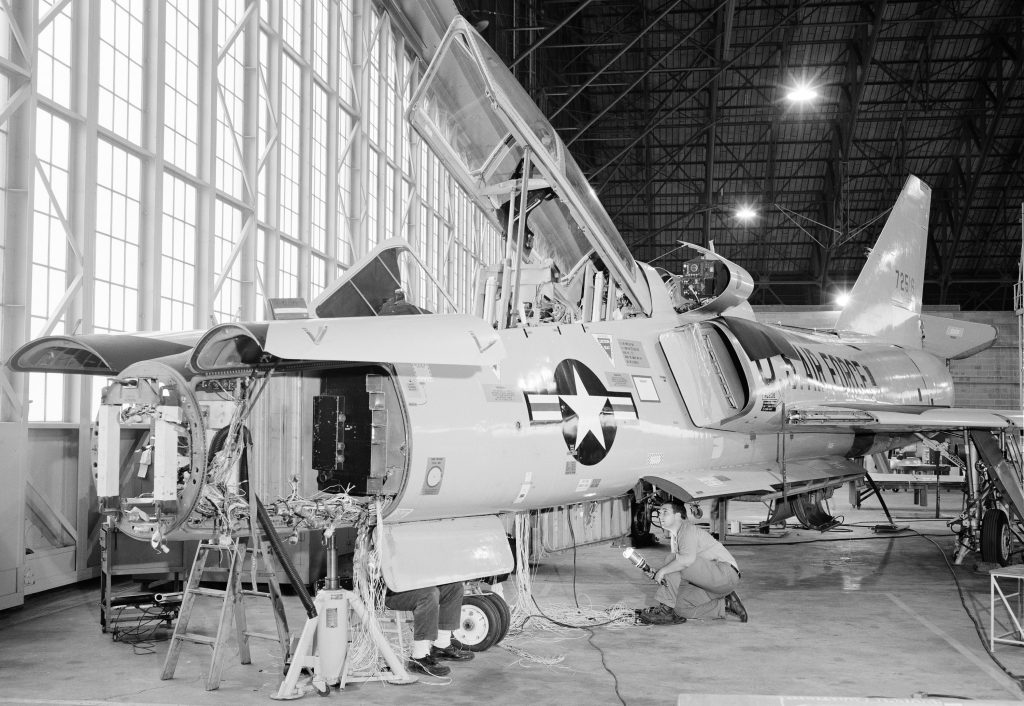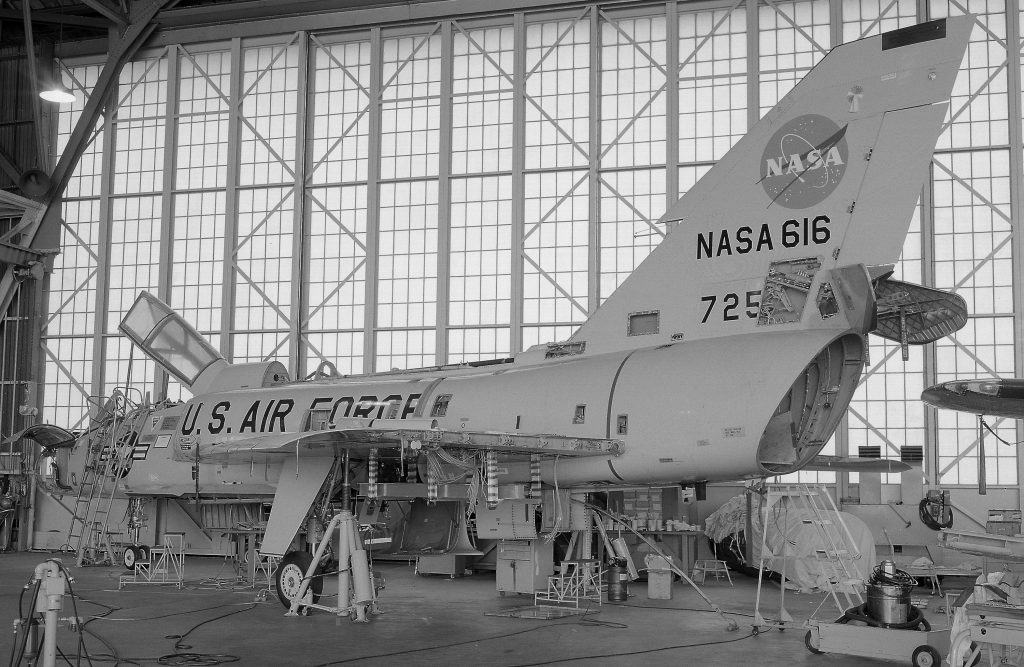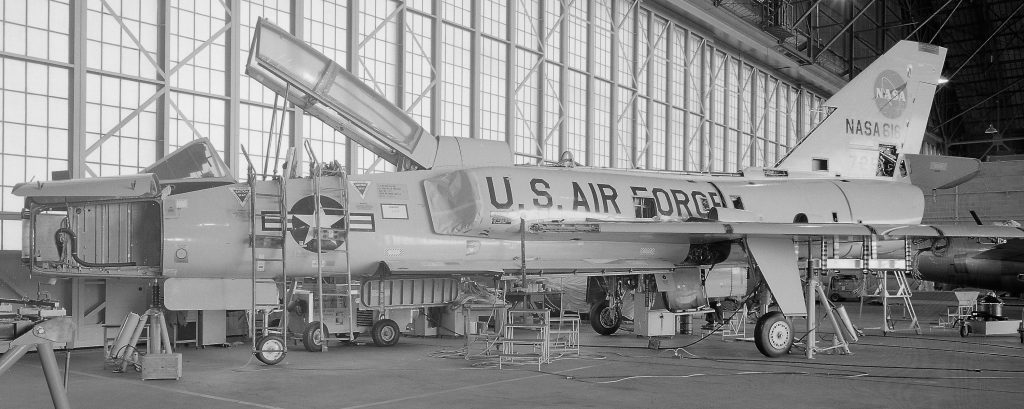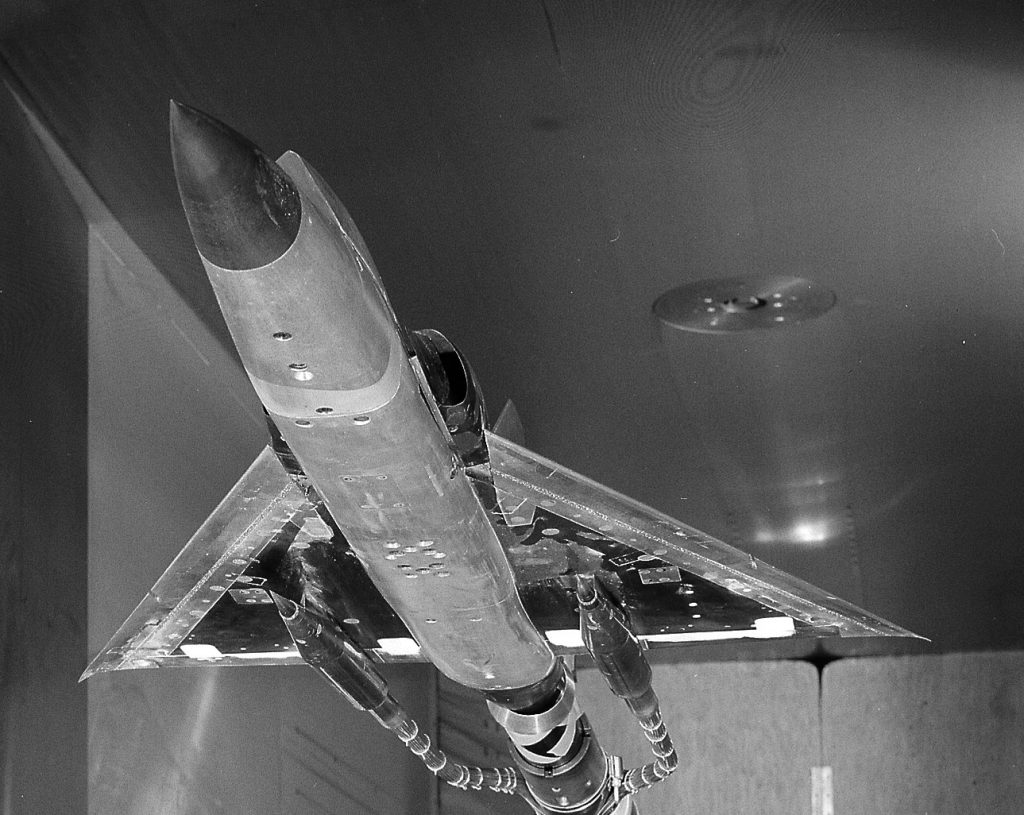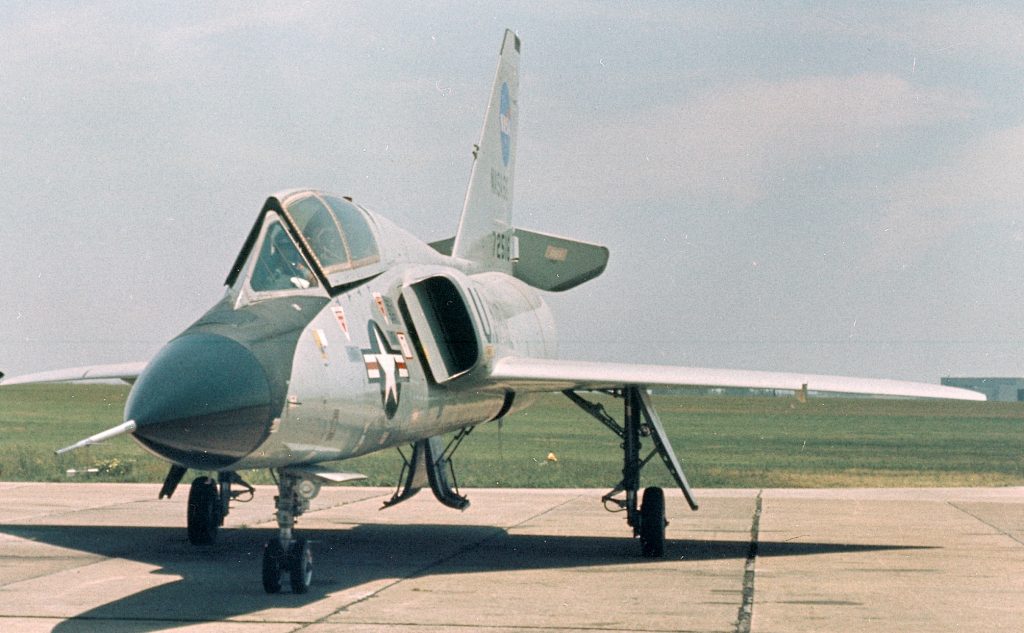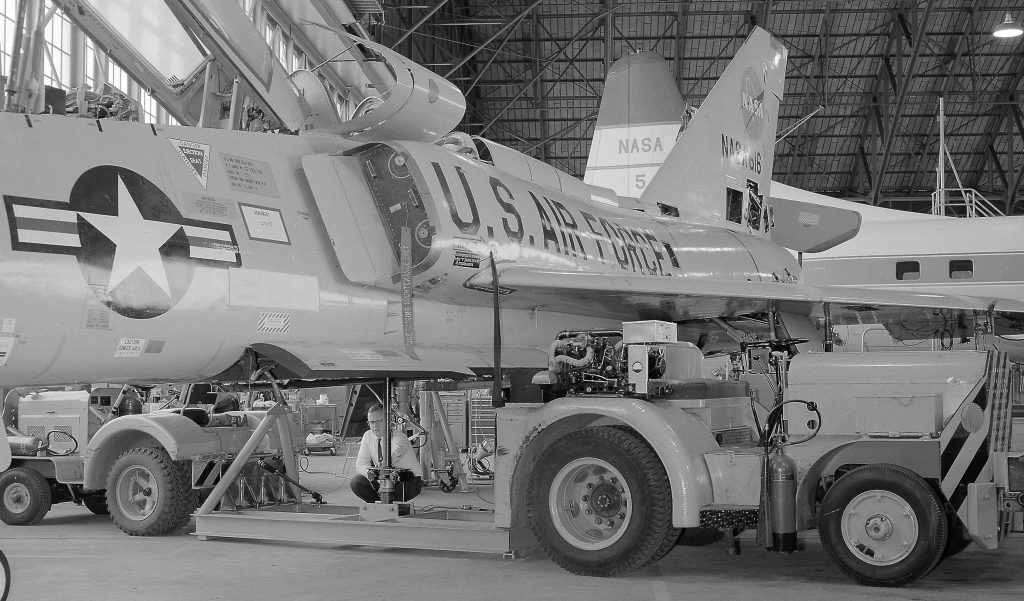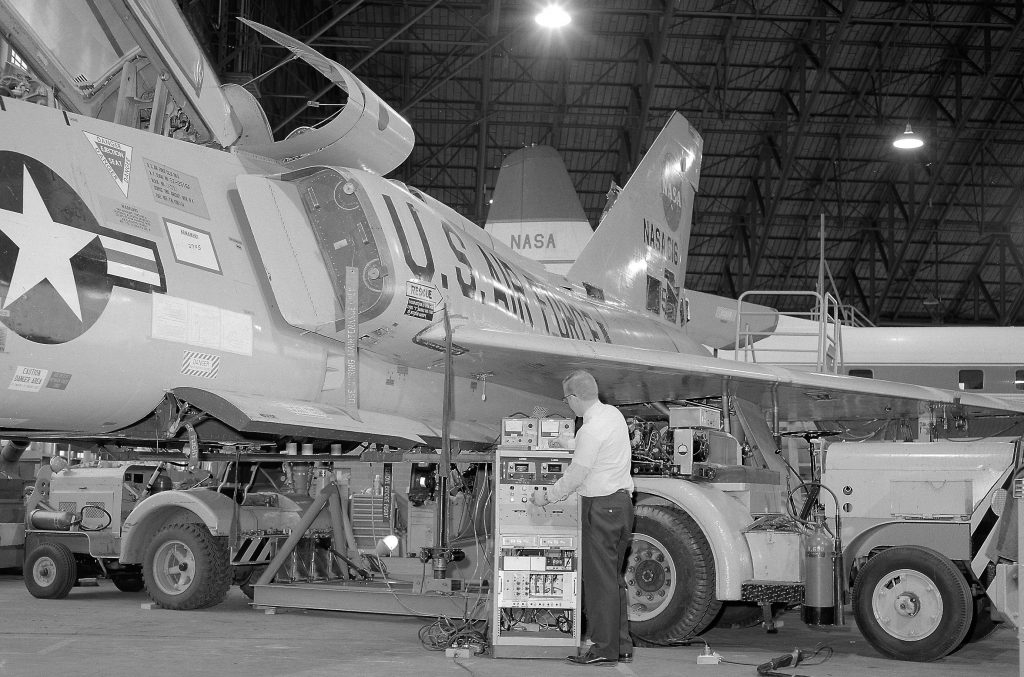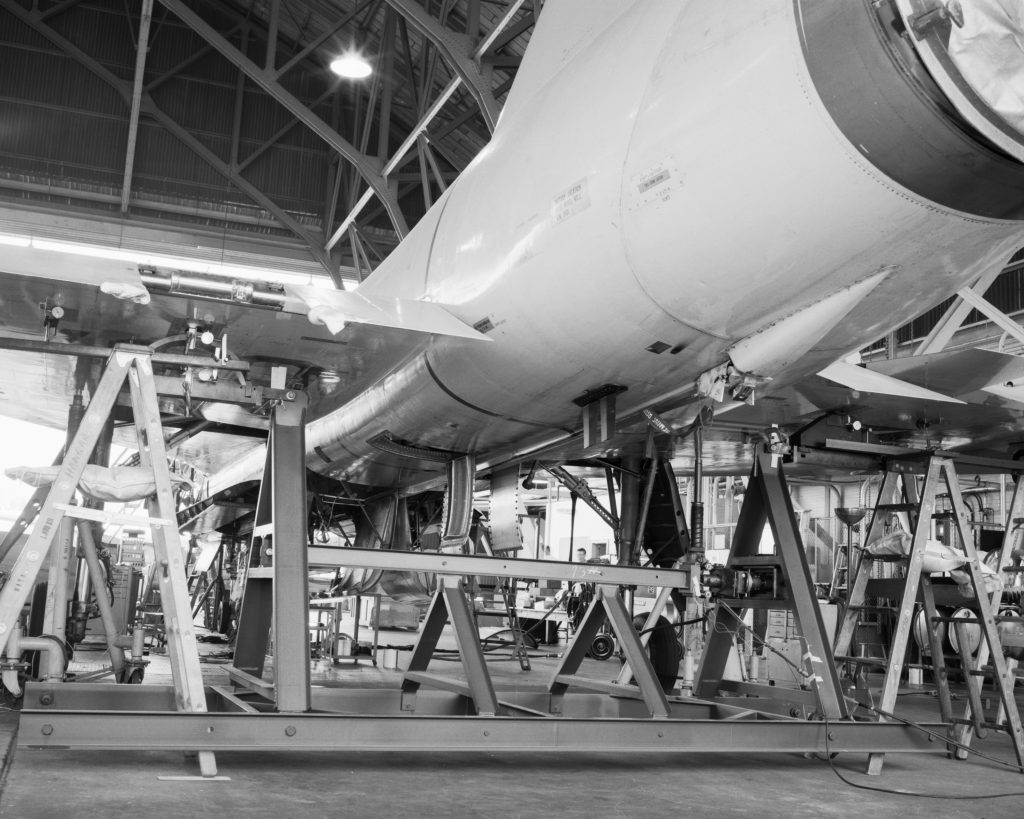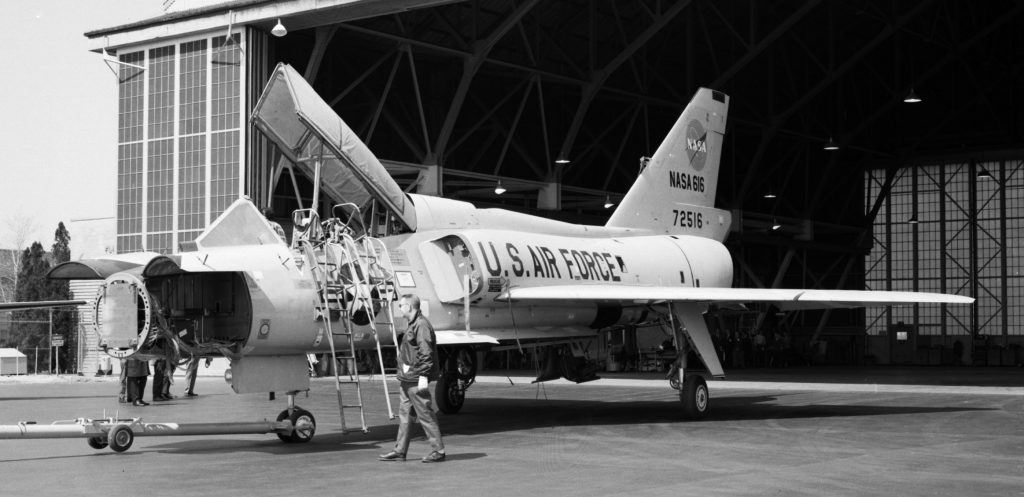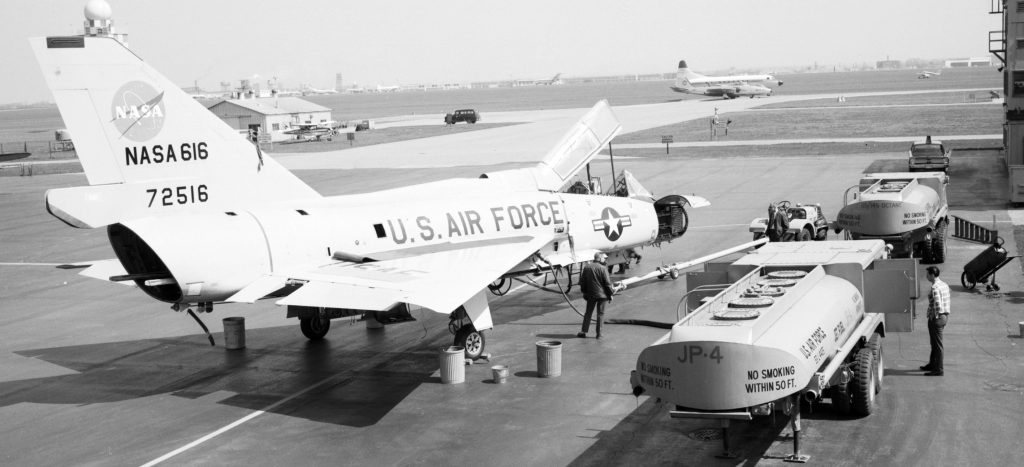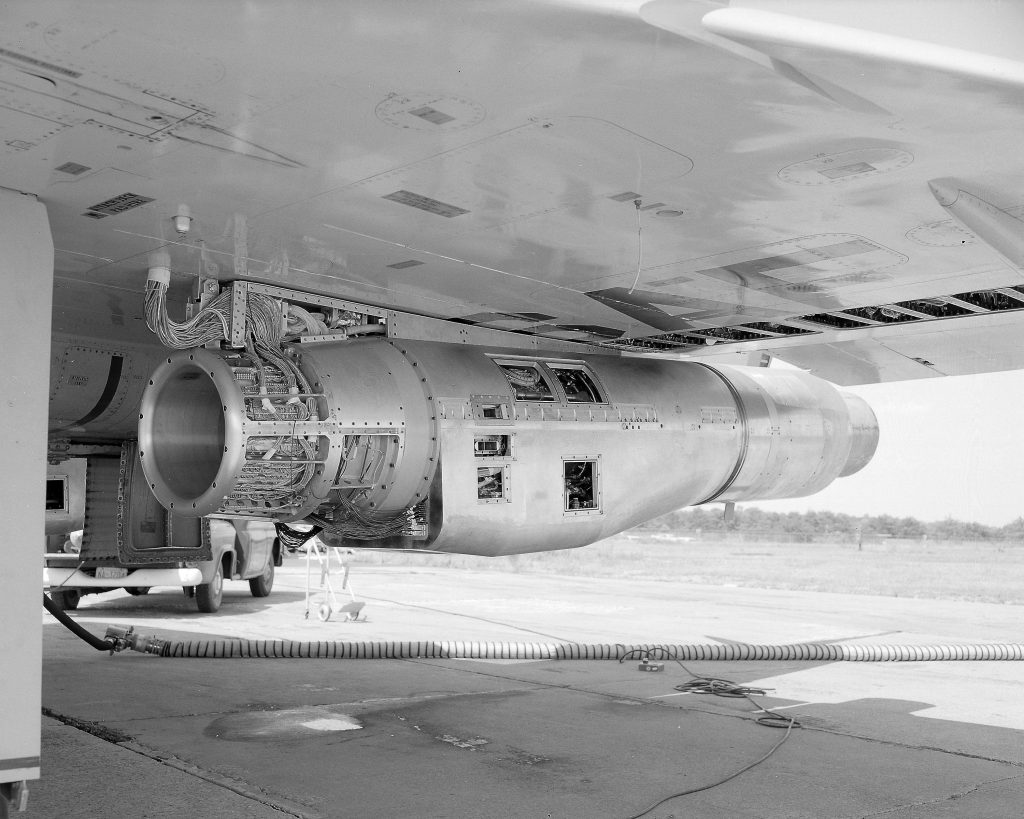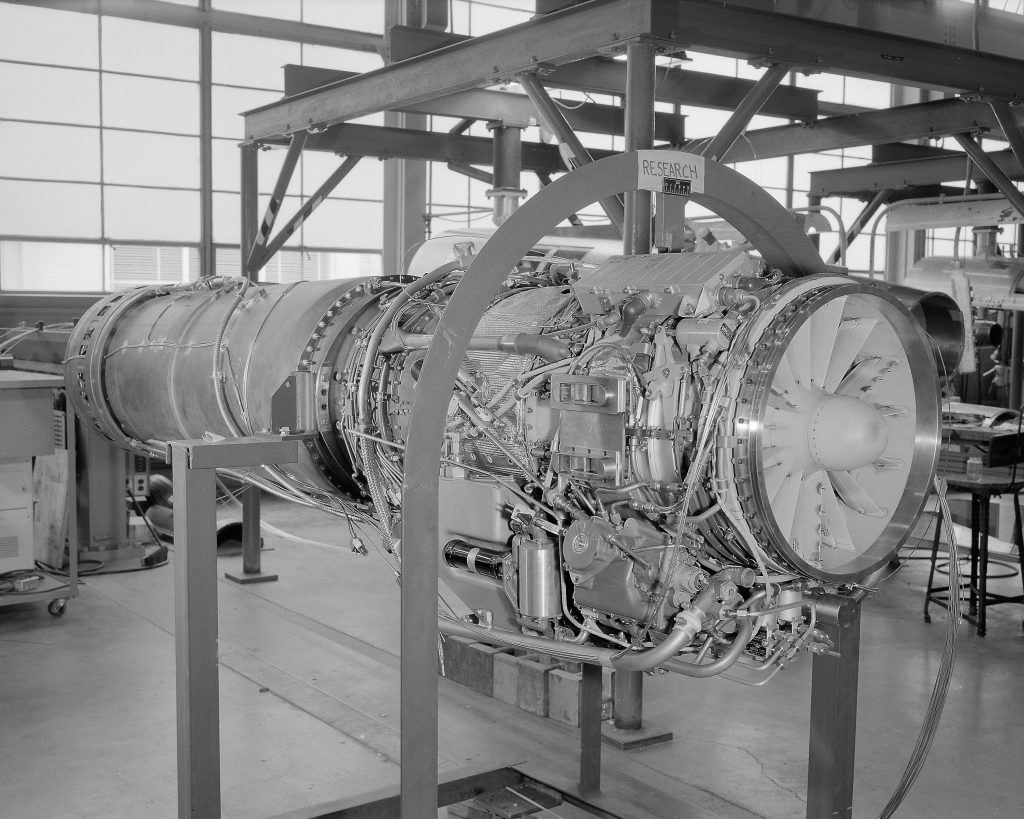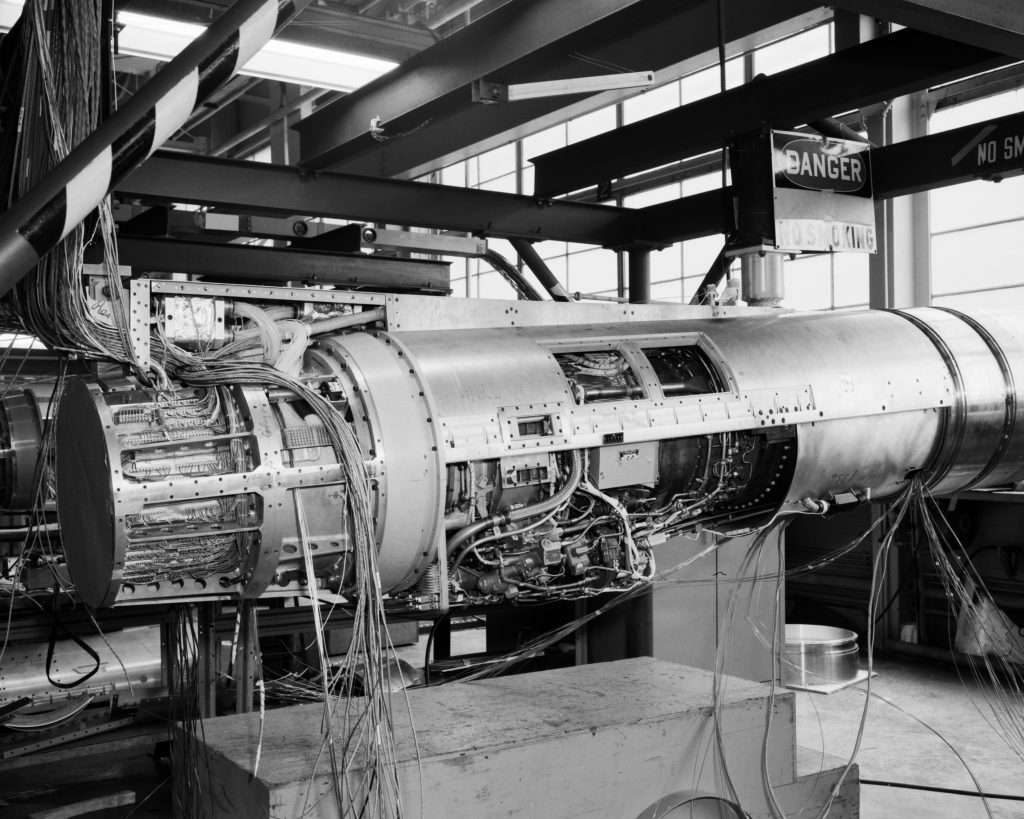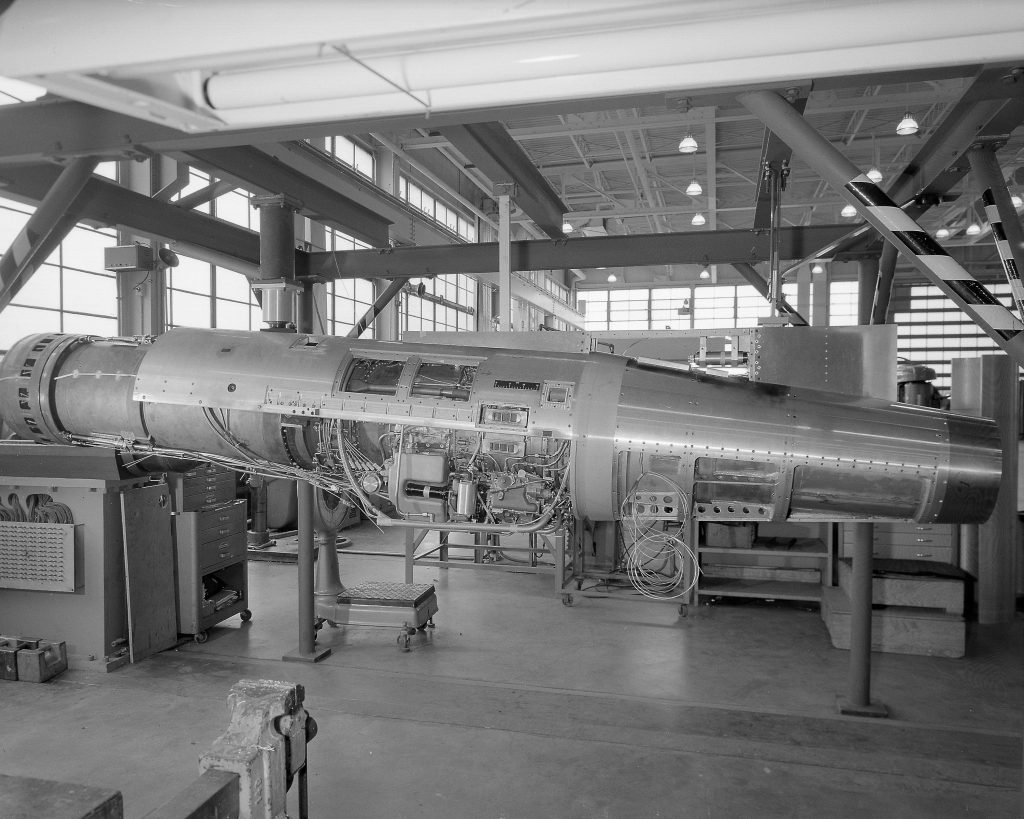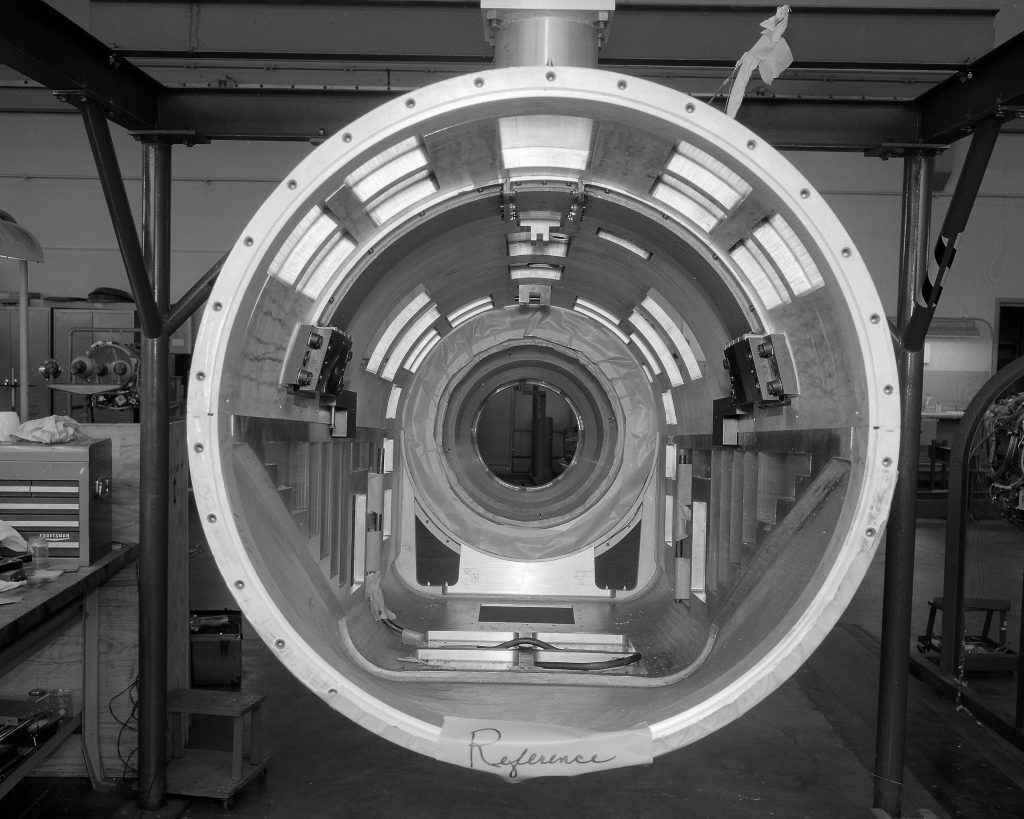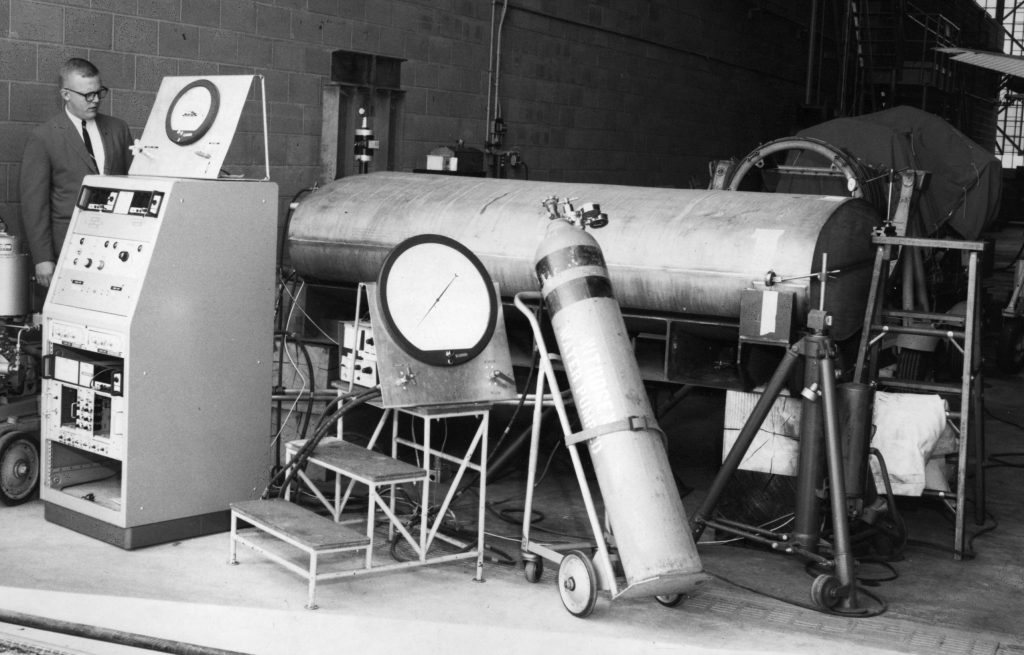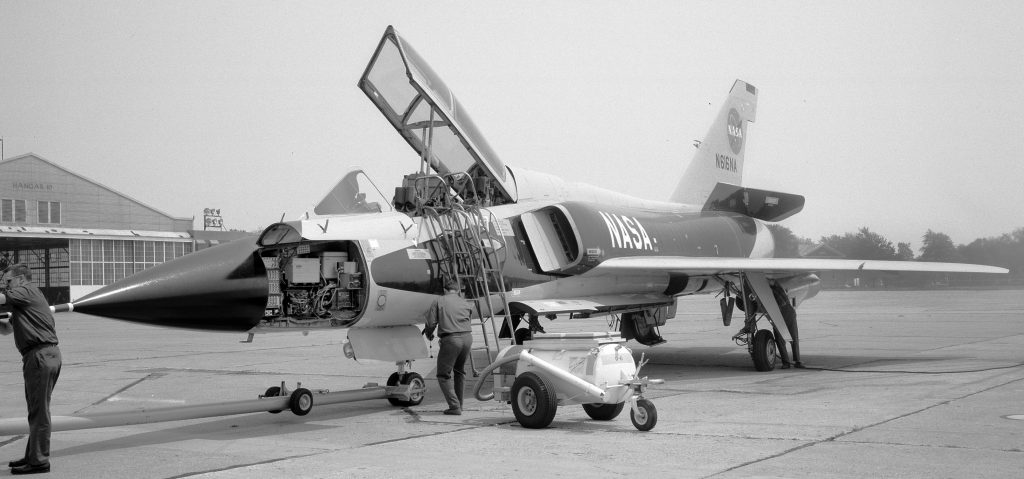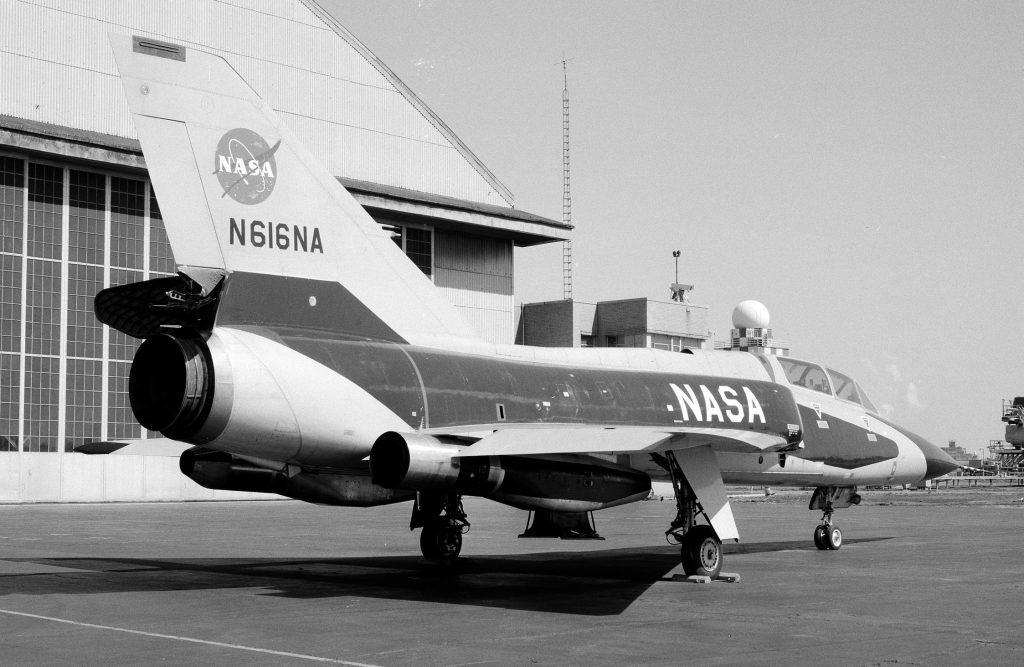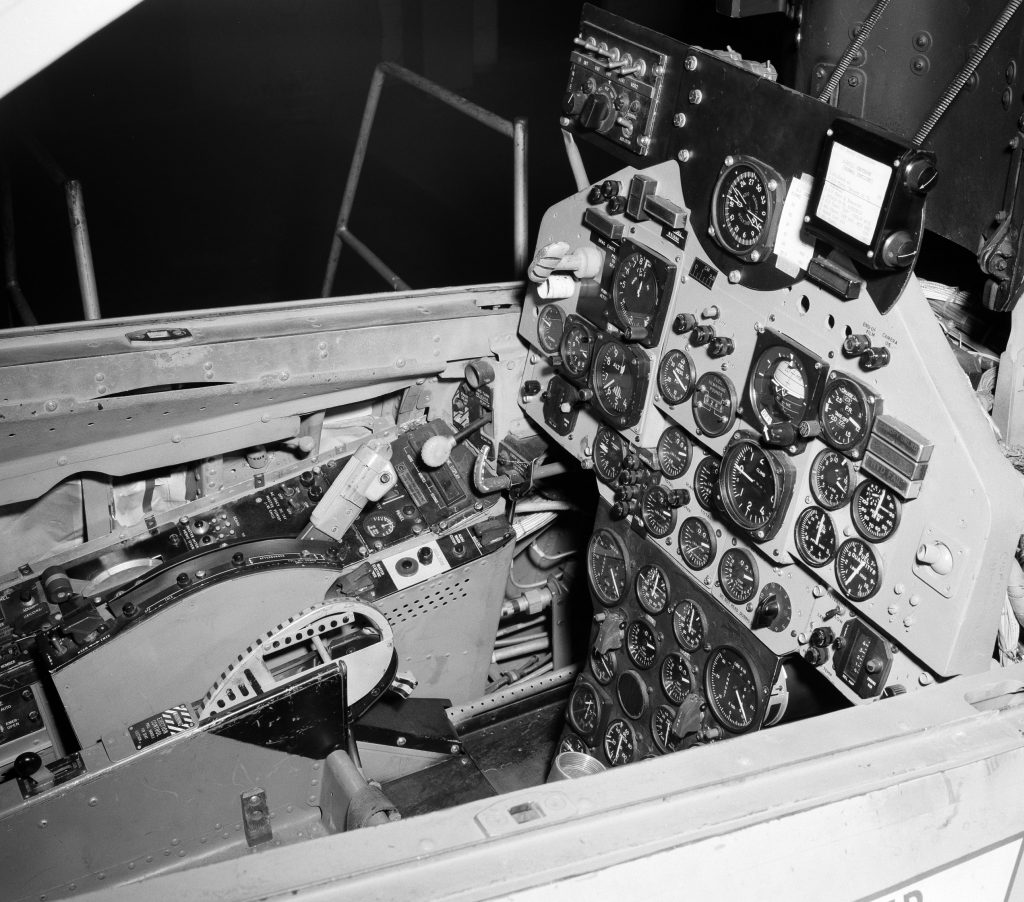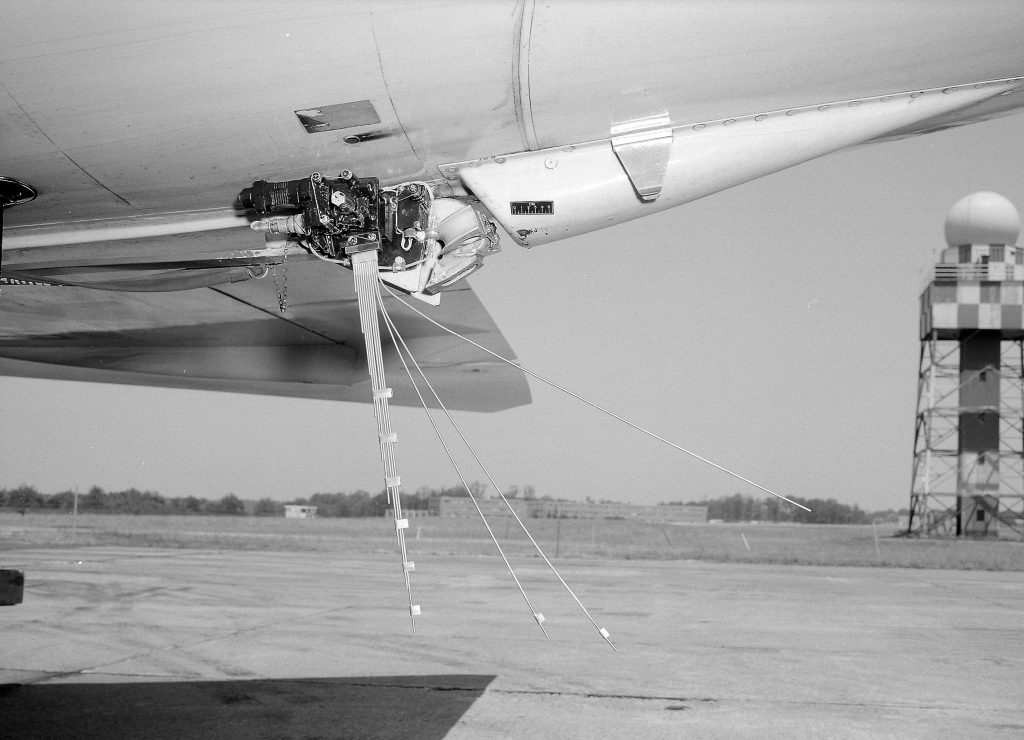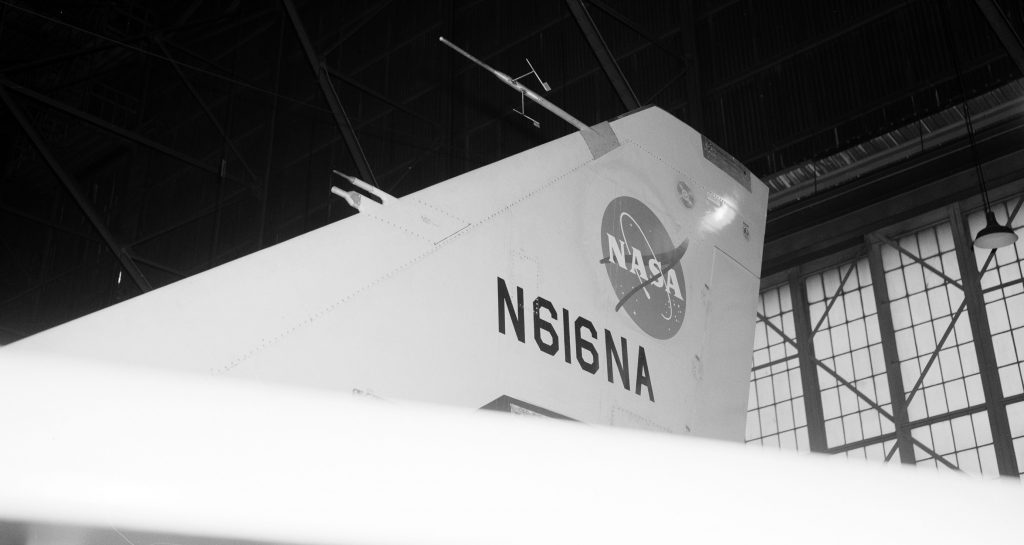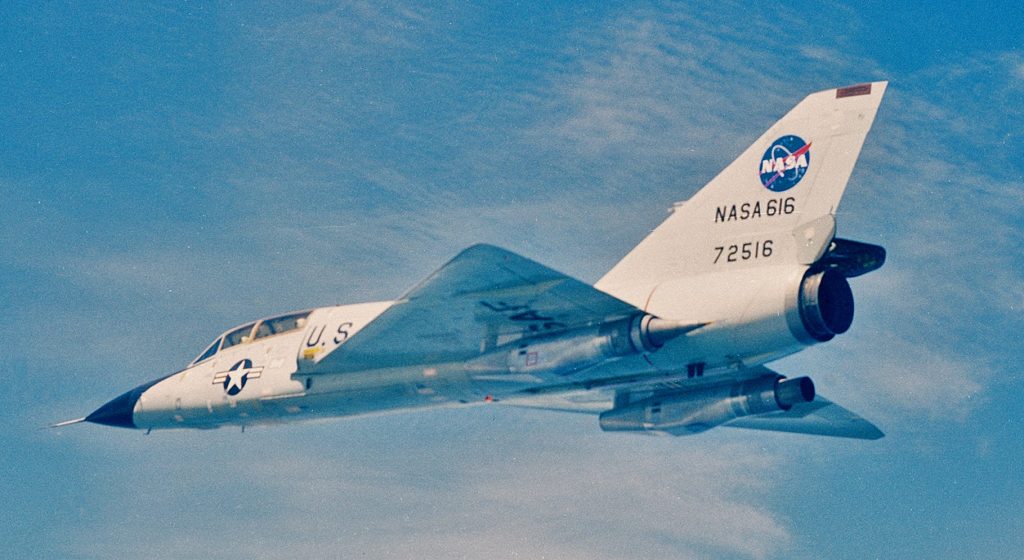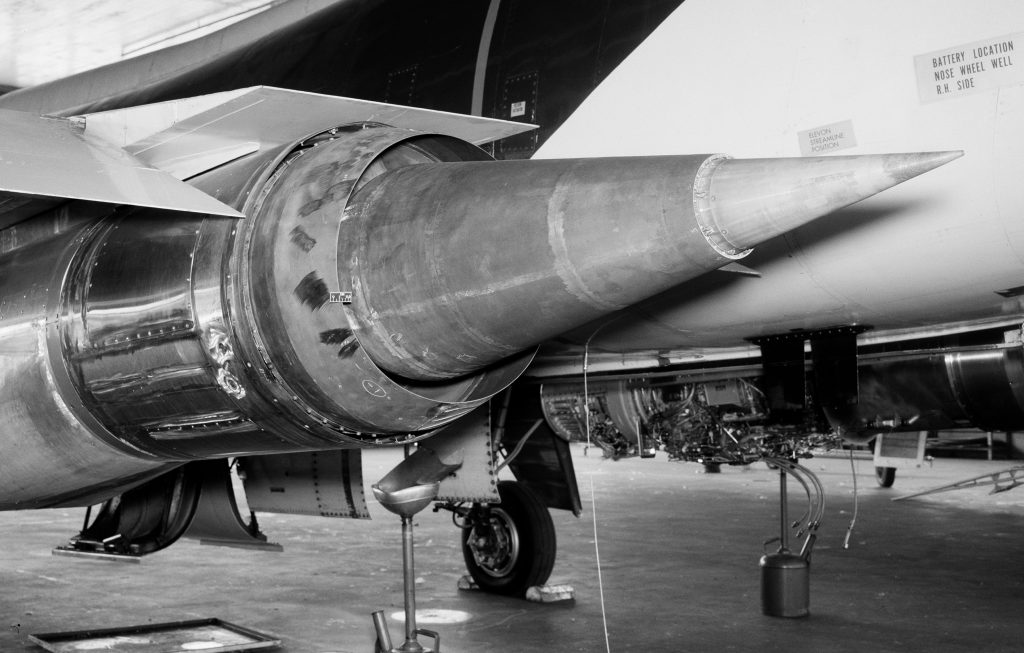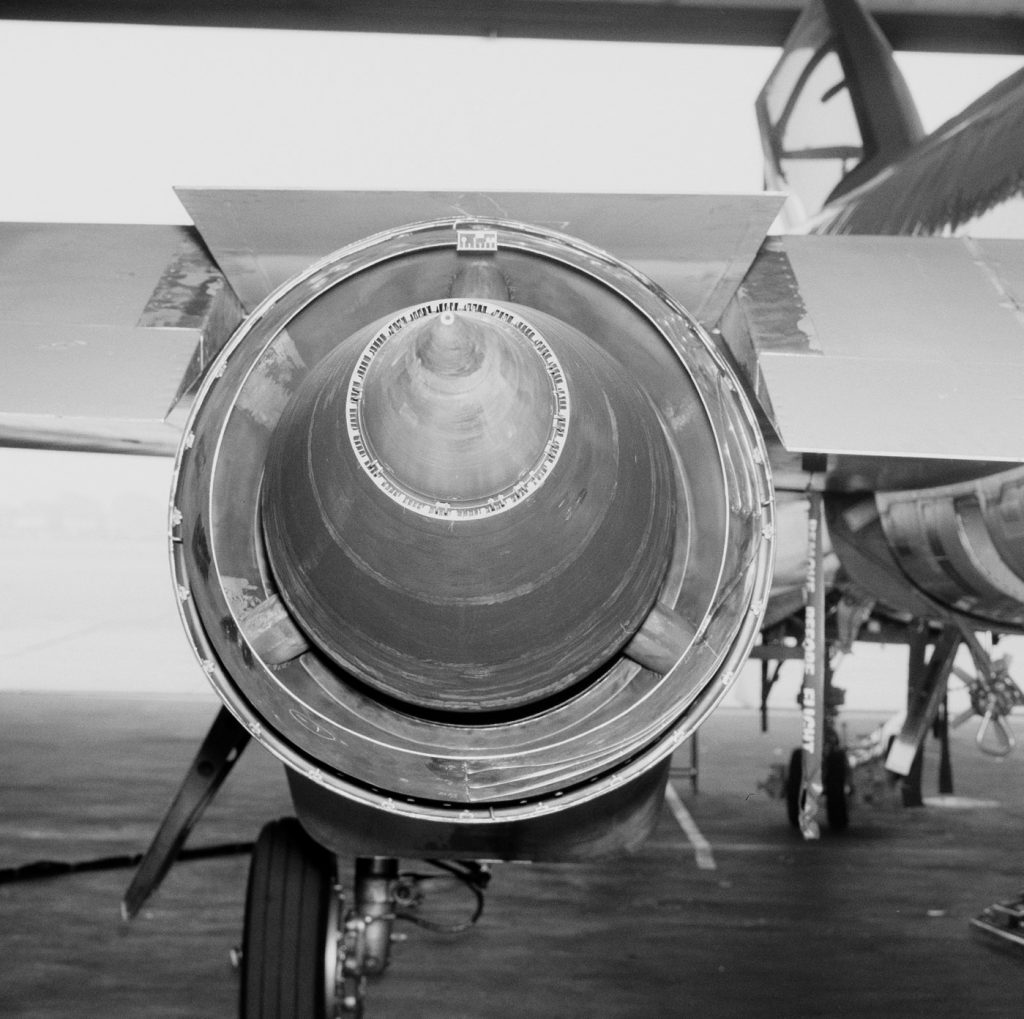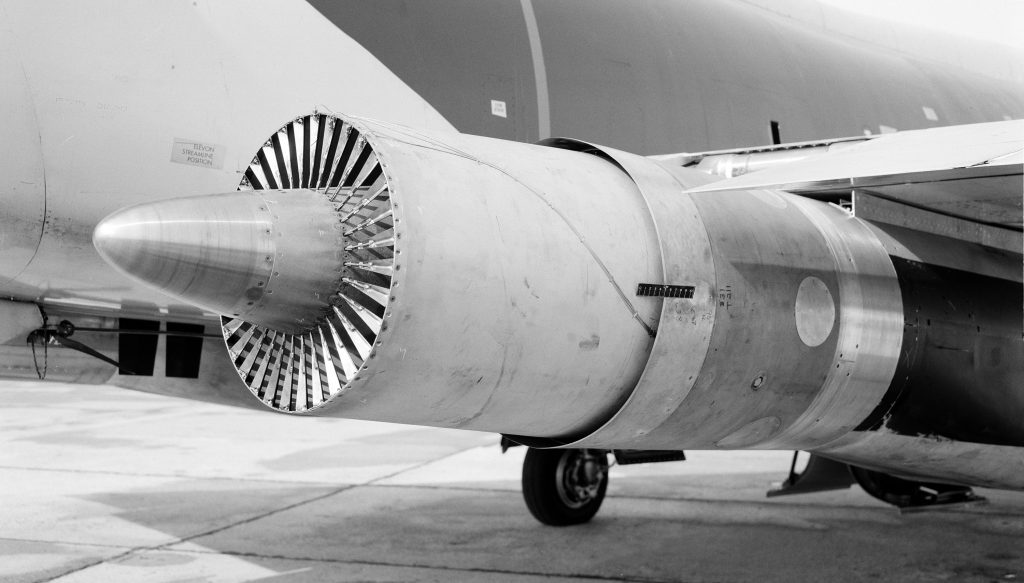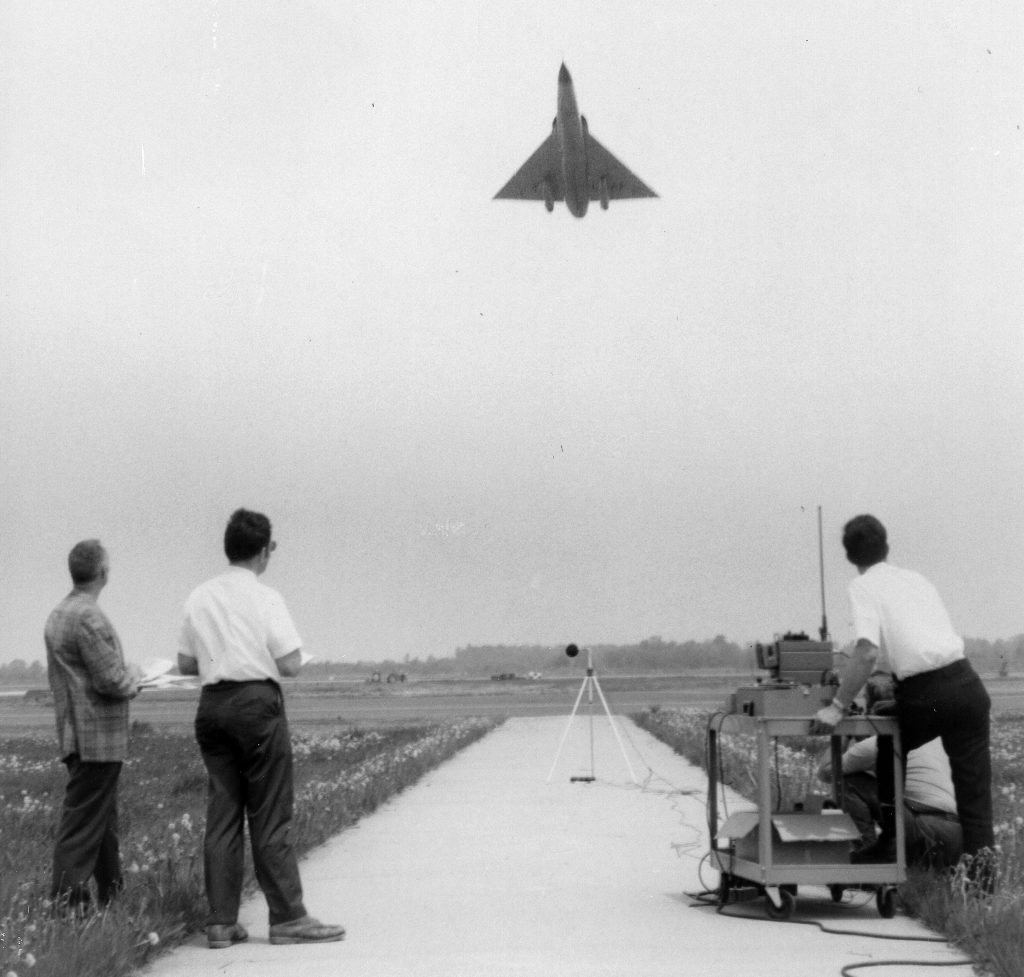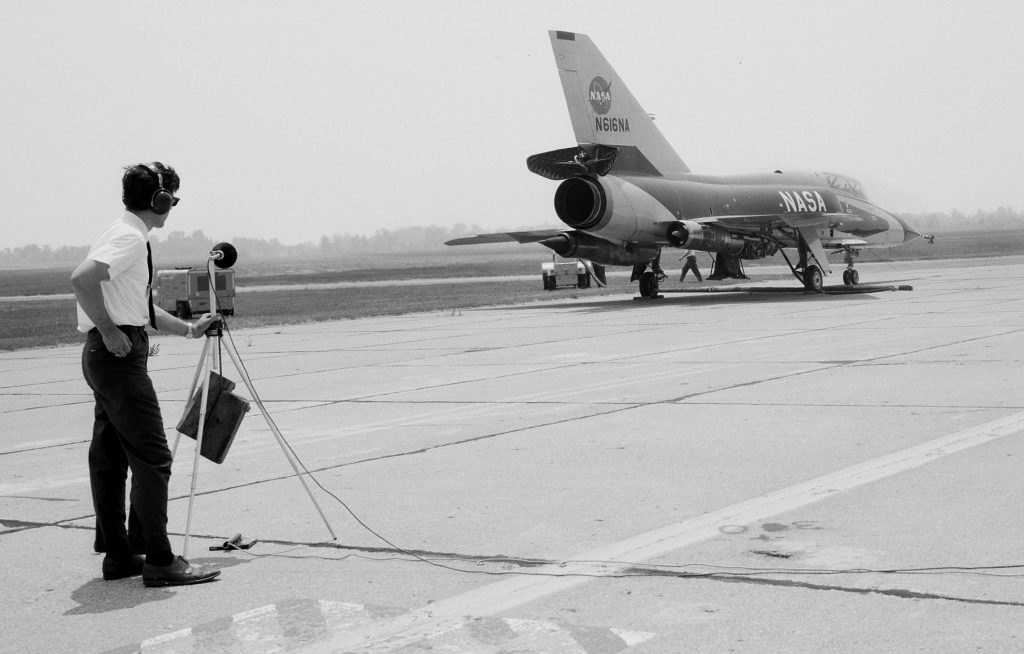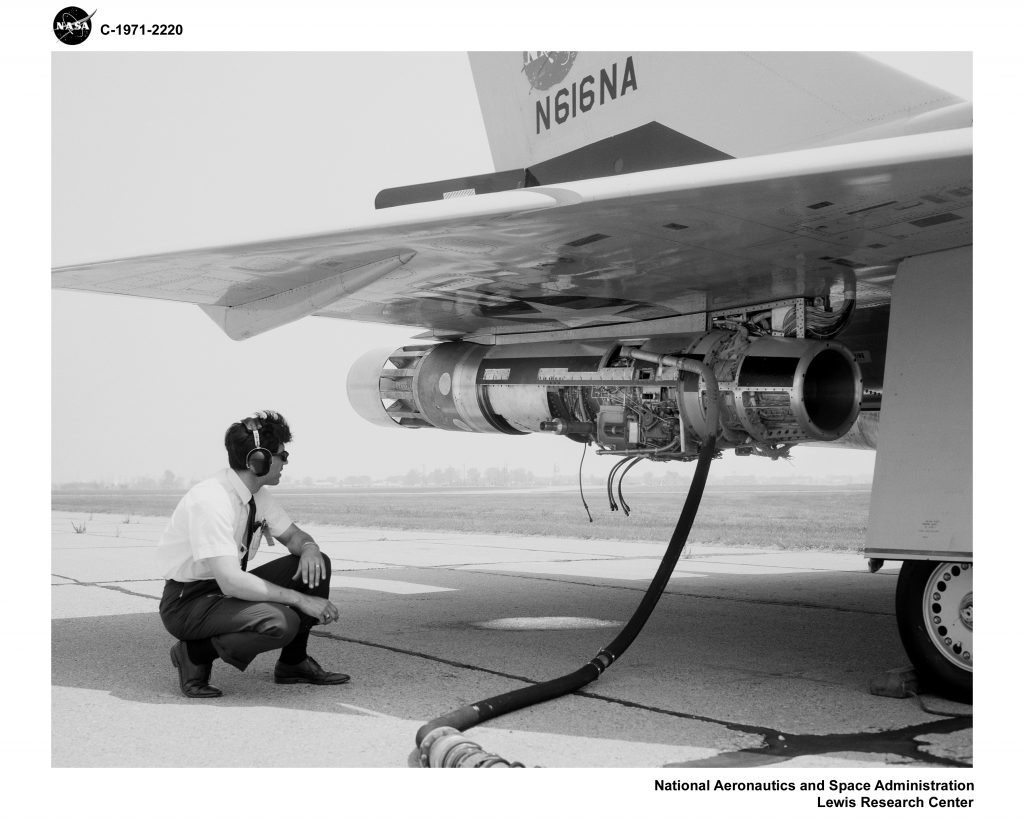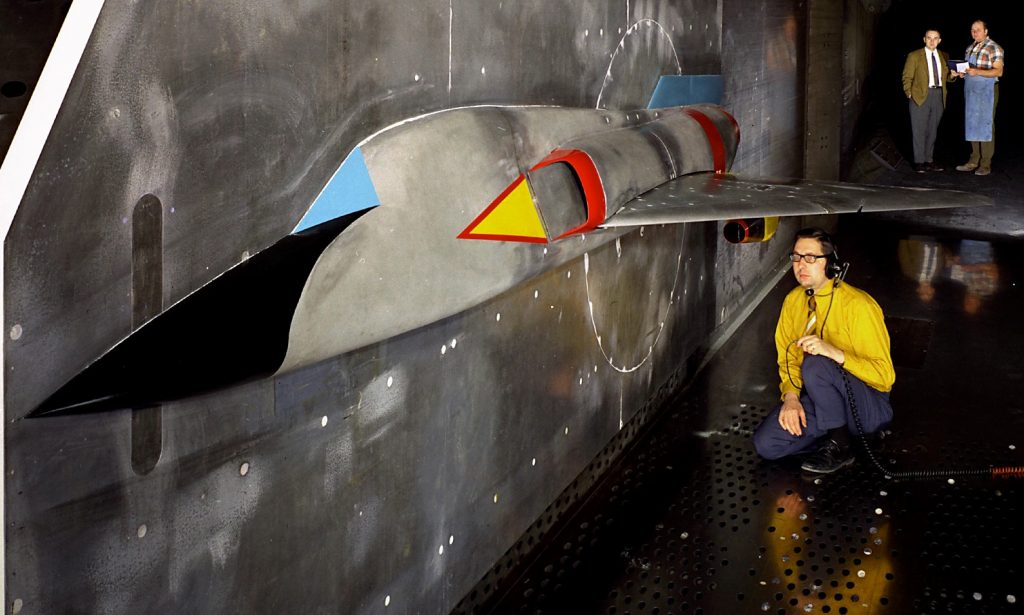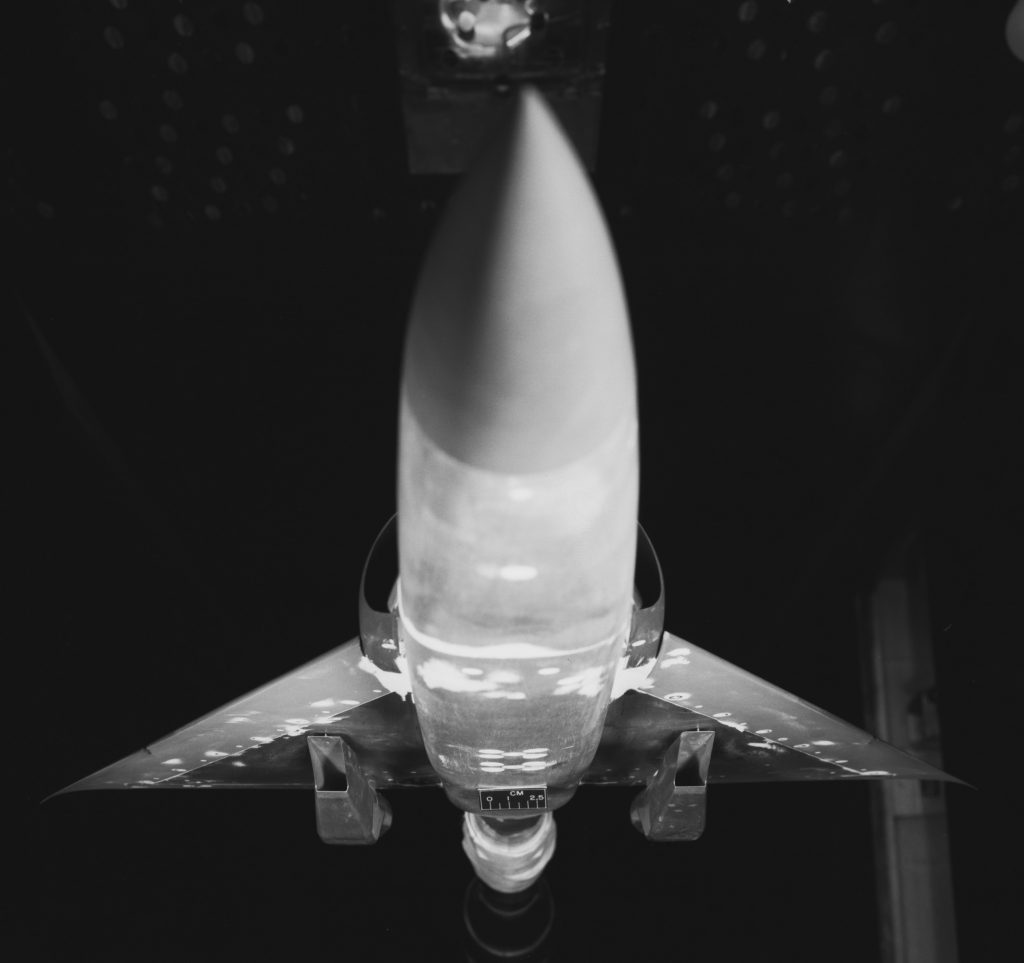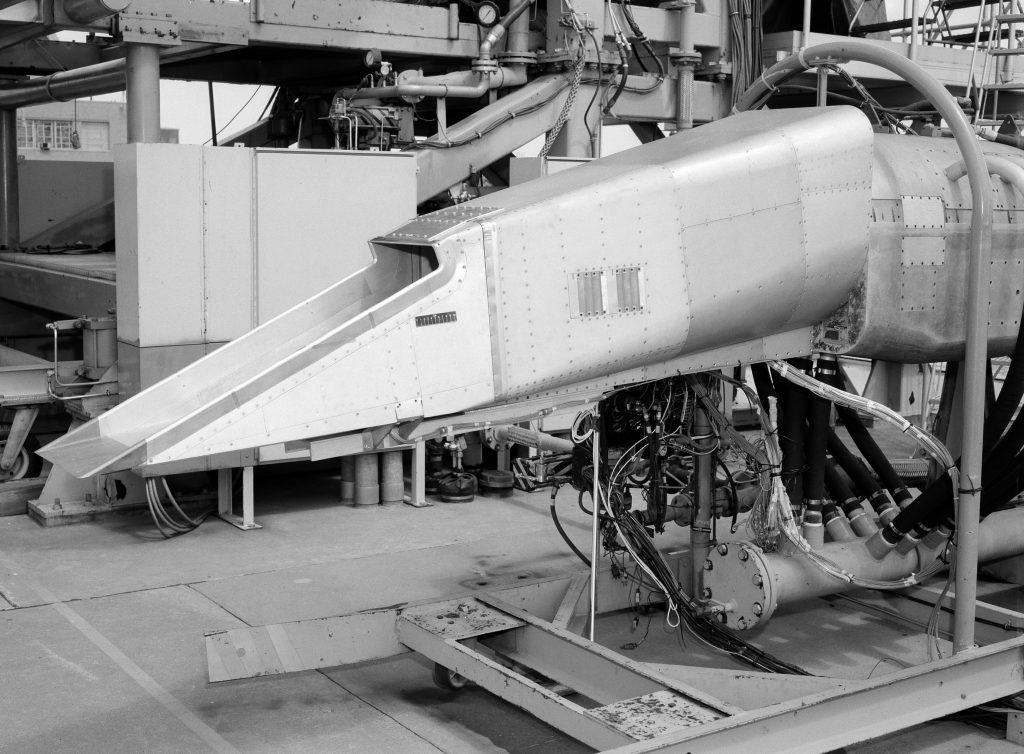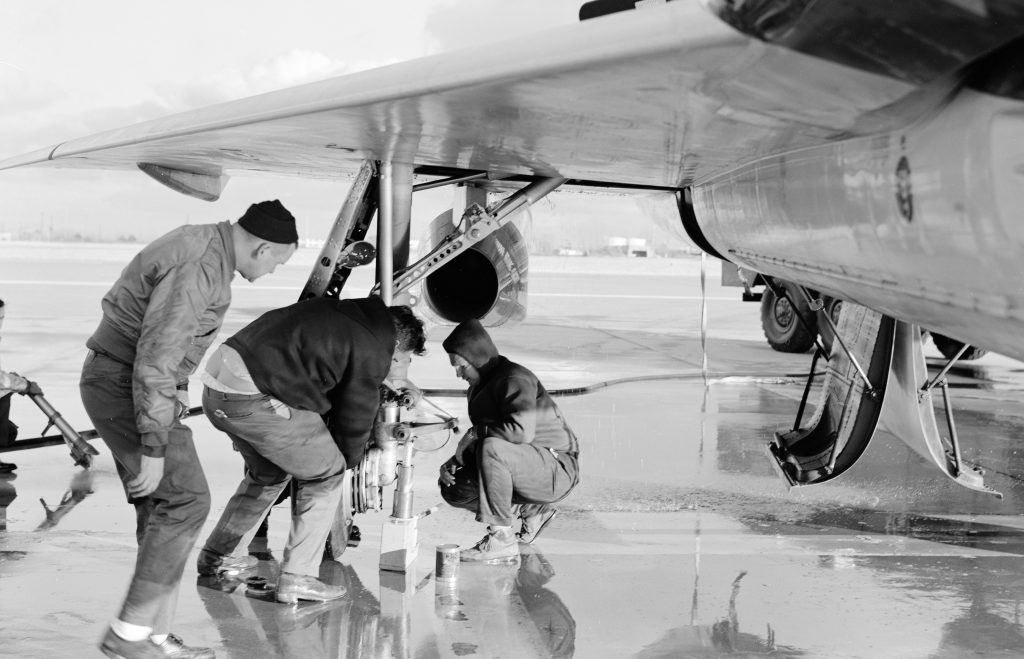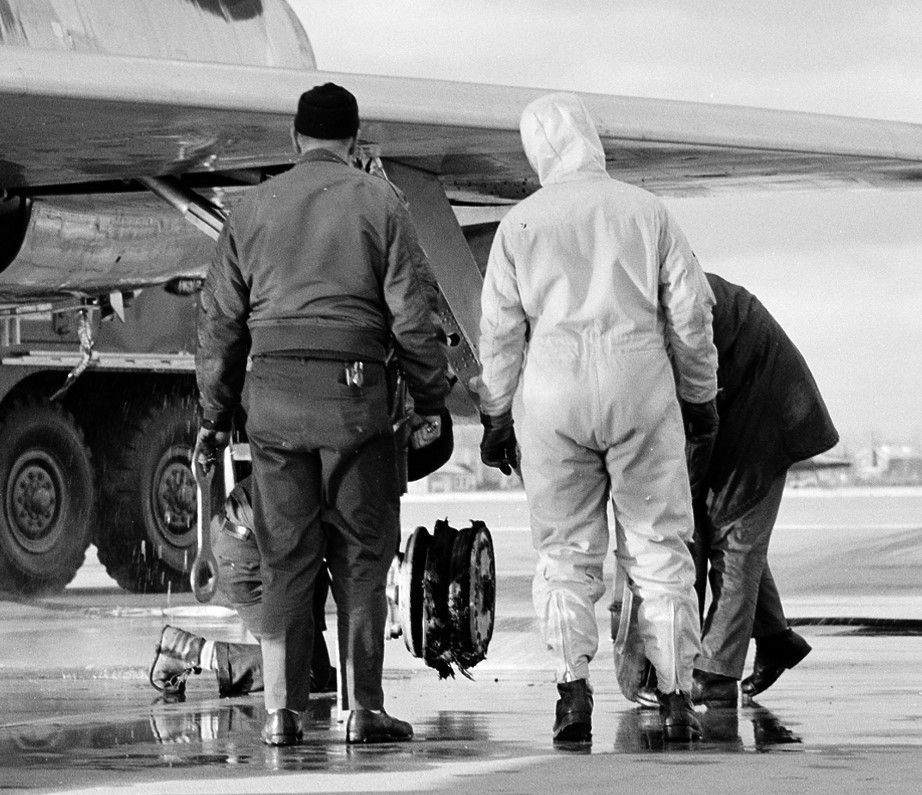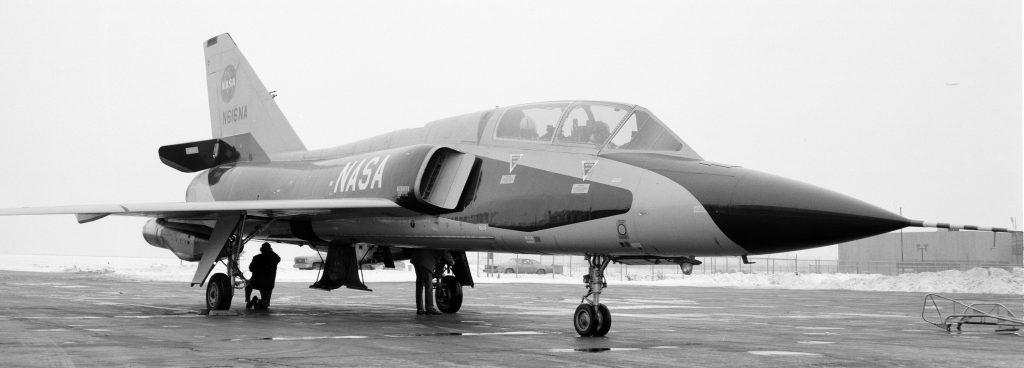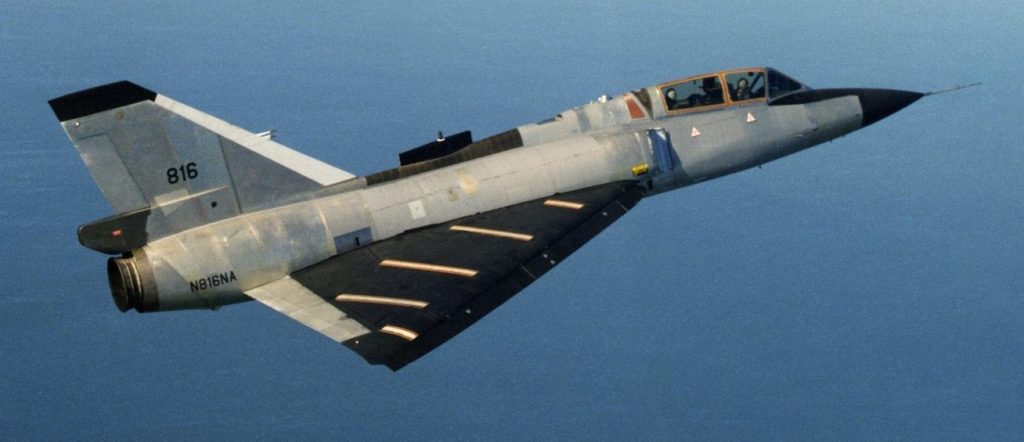In 1966, NASA took possession of a USAF F-106B that had been used to test ejection seats and radar systems.
Something different about this F-106B.
NASA tail code 616 while in use at Lewis Research Center, Ohio, and changed to 816 while at Langley Research Center, Virginia. USAF tail code 72516.
A lot of surgery and load-testing. 2-thousand-5-hundred pounds of weapon system hardware were removed.
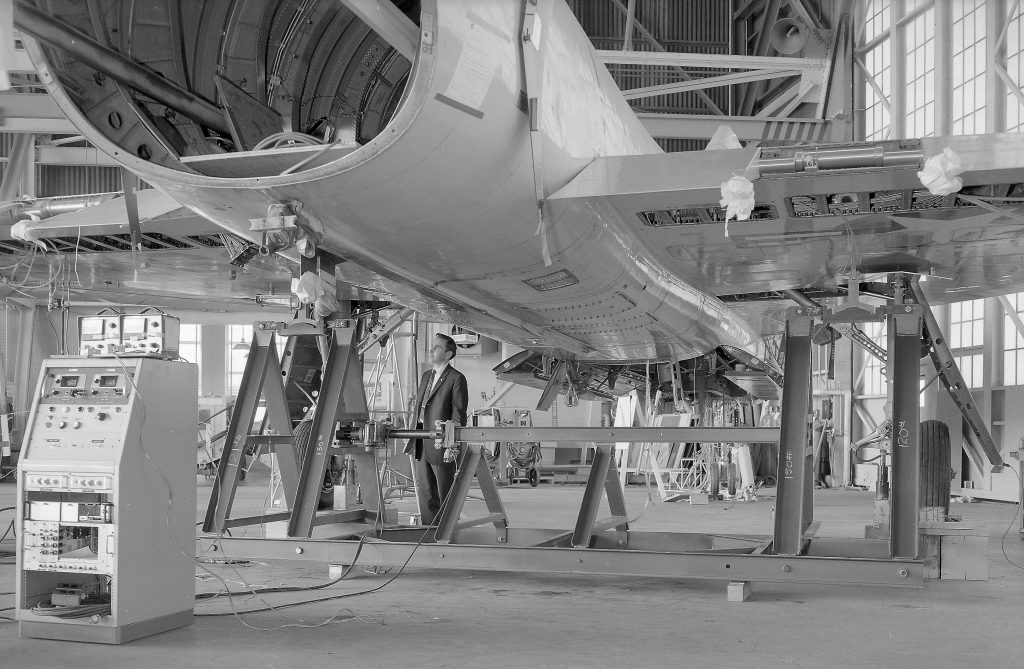
Looking like the rear load tester, NASA claims this is the “front mount side load tester”. NASA photo, 1968.
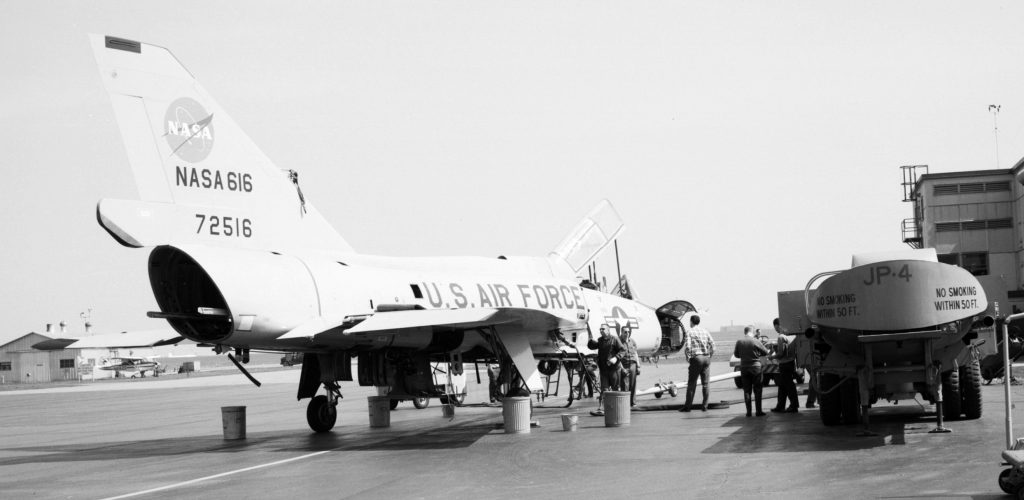
Despite no engines, they were pumping JP-4 (a type of kerosene for jet aircraft), apparently to test the fuel tanks? NASA photo, 1968.
Underwing nacelle. The first research flight with the three engines was on 03JUN1968.
General Electric J-85 engine. The J85 was originally designed for a air-to-surface missile carried by the B-52, but it went on to power the T-38, F-5, A-37 and CT-114.
Nacelle build-up. Apparently the left (port, #2) engine was a special version of the J85, and the right (starboard, #3) engine was the standard production J85. The idea was to use the experimental things on the ‘special’ J85 and then compare the performance to the ‘normal’ J85.
A new fuel tank was made to fit the internal weapons bay.
Note three jet exhausts on the F-106B. The co-pilot in the rear seat operated the J85 engines.
NASA tried different sensors.
The U.S. Air Force wanted to test different types of exhaust nozzles in an attempt to achieve supersonic cruising (without using the after burner).
The U.S. commercial passenger airliner industry also wanted to test ideas for the Super Sonic Transport (SST). Boeing/General Electric/NASA’s first attempt at an SST was canceled in 1970 when the U.S. Senate refused to spend anymore tax dollars on it. Another attempt was made in the 1990s when NASA/Boeing began using a modified Russian SST, that program was also canceled due to lack of funding.
Silent video of multi-engined F-106B ‘616’ roll-out, take-off, flight and landing. This edit also includes lightning strike testing, NASA ‘816’ (formerly 616) was also ‘lightning hardened’ and intentionally flown into thunderstorms. That testing helped develop technologies that are taken for granted today:
It was also used to test jet engine mufflers (acoustic suppressors) for the U.S. airliner industry. This is because taxpayers had successfully got their lawmakers to limit the level of noise created by jet airliners. Unfortunately, all attempts to suppress the noise levels of jet engines had no affect on preventing sonic booms, and many global metro areas (the only markets for SSTs) made it a crime to break the sound barrier, just one of many reasons why SSTs like Concorde and Tu-114 were killed off.
Wind tunnel model with squared ‘wedge’ F-15 style intakes.
Blown main-gear tire at Selfridge Air Force Base, Michigan, 1971.
Supposedly this is a photo from the final flight of the three engined F-106B. It would return to having just one engine.
In 1979, NASA 616 was sent to Langley Research Center where it became 816. As the last piloted Convair F-106 anywhere, NASA 816 saw service at Langley researching storm hazards, experimenting with an ‘Off-Surface’ flow visualization system, and testing a vortex flap.
F-106B NASA 616(816) was retired in May 1991:“NASA 816 made its last flight on April 30. It was the last known piloted Convair F-106 still flying.”
Supposedly, 616/816 was not turned over for target drone duty as were the vast majority of F-106s, but retired to the Virginia Air & Space Center in Hampton, Virginia.
Bare Metal: NASA Trucks
Taxpayers help the Airliner Industry: NASA’s Tupolev 144 SST
Vehicle I-D: NASA’s F-8 SUPER-CRITICAL-CRUSADER, FATHER OF MODERN AIRLINER WING DESIGN


